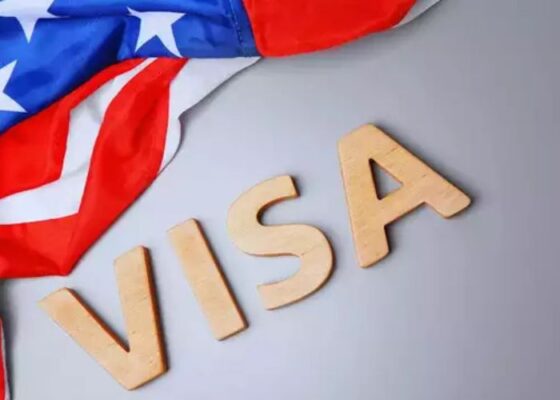
India’s tech business has been rocked by the recent changes to US visa rules. As an immigration lawyer who has helped Indian professionals get US visas for more than seven years, I can tell you directly how the new rules are affecting workers and businesses. I’ll explain the new rules and check to see if they could put your job at risk in this piece. Read below about “New US Visa Rules Devastate Indian Workers- Is Your Job at Risk?”.
Table of Contents
H-1B visas Hit Hard
For Indian tech workers, the H-1B visa is very important. It lets US companies hire foreign experts for short periods of time in specialized jobs like accounting, engineering, and IT.
Indian citizens have been getting most of the H-1B visas for years now. Many of the people who got H-1B visas in 2019 were from India. But new rules from USCIS have made it much harder to get an H-1B.
There are still only 85,000 H-1B visas available each year, which is the ceiling set by the cap. Still, the number of applications has gone through the roof. USCIS got 275,000 applications for the fiscal year 2021. It only took a few days to hit the cap.

Now, your chances of winning the lottery are only 30%. Also, USCIS is turning down more applications because of small technology problems.
Also, the government has made it harder for people with H-1B visas to renew them. The USCIS raised the number of challenges and calls for more proof. The number of H-1B visa extensions that were approved dropped from 92% in Q4 2015 to 74% in Q1 2020.
Since H-1B visas are running out, the future of many Indian tech workers is unclear. When their visas run out, companies may have to let them go.
Checks Are Also Being Done on L-1 Visas
After H-1Bs, the L-1 visa for intracompany transfers is the next most popular type of visa for Indian workers. But it’s also getting harder to get an L-1.
L-1 visas used to be a good choice for Indian professionals who were moving to a US office of the same company. But the USCIS has been turning down more L-1 applications.
In Q4 2015, 84% of people said yes, but in Q1 2020, only 74% said yes. If USCIS thinks the worker is in a “specialized knowledge” job, they will often deny the visa. Fewer Indian workers can meet the new norms.
Like H-1Bs, L-1 extensions are getting more attention. The USCIS often questions whether the worker really does have expert knowledge and is meeting a real business need.
Less Permission for Spouses to Work
There have also been effects on the spouses of H-1B users who are on track for green cards. They used to be able to get an Employment Authorization Document (EAD) that let them work in the US. But the time it takes to handle EADs has grown very long.
On average, spouses now have to wait more than 8 months for their EADs to be processed, which means they can’t work for long stretches of time. Since 85% of H-1B users are from India, these long delays hurt Indian families more than anyone else’s.
The government has also said that it might end the EAD program completely, which would mean that spouses who depend on the worker would have to stay unemployed. This might make more Indian families less likely to come to the US to find work.
Aims at Outsourcing Companies
H-1Bs and L-1s are very important for Indian outsourcing companies like Tata, Infosys, and Wipro to provide US services. But because of the new rules, there are fewer visas available and it’s much harder to get extensions.
Some US lawmakers say that companies that outsource take advantage of visa programs to hire cheaper foreign workers instead of American workers. This idea, whether true or not, has made people look more closely at the visas that outsourcers use.
Because of this, Indian companies now have a hard time keeping their US employees. If there are fewer visas available, they might have trouble getting the best employees. If workers can’t refresh their status, outsourcing projects for US clients could also be slowed down.
What Are the Overall Impacts on India?
Taken together, the new US policies create an incredibly challenging environment for Indian tech talent. Fewer visas are available, and renewals are much tougher.
India’s $150 billion IT industry is built around the US market. If companies cannot sustain enough staff in the US, it could significantly impact revenues and growth.
Indian workers also face turmoil and uncertainty. With visas harder to keep, their livelihoods and family immigration plans are at risk.
The Indian government estimates that 500,000 to 750,000 jobs in India are under threat from the new US rules. With India already facing COVID-related economic woes, these visa policies could not have come at a worse time.
So Are Indian Tech Jobs in the US at Risk?
For Indian nationals currently in the US on visas like the H-1B and L-1, the future is highly uncertain. Renewals are no longer guaranteed, so their jobs could be at risk when current visas expire.
Some analysts estimate over 500,000 Indian H-1B and L-1 holders could be forced to leave the US over the next 2-3 years. Many more visa applicants still in India may not get approved to work here at all.
However, those with advanced degrees from US universities and higher-level professional experience have better odds. The same is true for workers at US tech giants like Amazon, Microsoft, and Google that have significant legal resources.
Employees at major outsourcing firms face higher risks, as do mid-career professionals with less seniority. If your H-1B or L-1 is expiring soon, I’d recommend speaking to an immigration attorney immediately about your options.
Long-Term Outlook?
While the short-term prognosis is negative, the long-term future for Indian workers in the US could be brighter. The technology sector has a major labor shortage, with over 1 million unfilled positions. This talent gap will widen as demand grows in areas like cloud computing and AI.
With the US producing too few qualified graduates, immigrant professionals remain vital to fill these roles. Over time, market demand may compel a relaxation of visa restrictions.
There’s also hope that policies could become more welcoming under a new administration. Immigration reform and a less antagonistic stance toward foreign talent may be on the horizon.
The US-India economic relationship is simply too important for current policies to continue indefinitely. But Indian workers will likely face an uphill battle in the coming years. Stay tuned to my blog for updates as the situation evolves. I hope you like reading “New US Visa Rules Devastate Indian Workers- Is Your Job at Risk?”.

Visa Expert, Arun Yadav is an accomplished immigration lawyer specializing in Spouse Visas, Visa consultant, Study Visas, and low-budget fund advising all across the world. With a Master’s degree in Immigration Law and 8+ years extensive experience in the field, Arun has cultivated a reputation for excellence and reliability by helping 3000+ clients for Visa consultation. He is dedicated to bridging education opportunities and securing visas for his clients. Explore expert advice and immigration tips on his Instagram profile: @visaexpertarunyadav. Follow his insightful content and benefit from his professional guidance in navigating the complexities of immigration law and visa acquisition.




